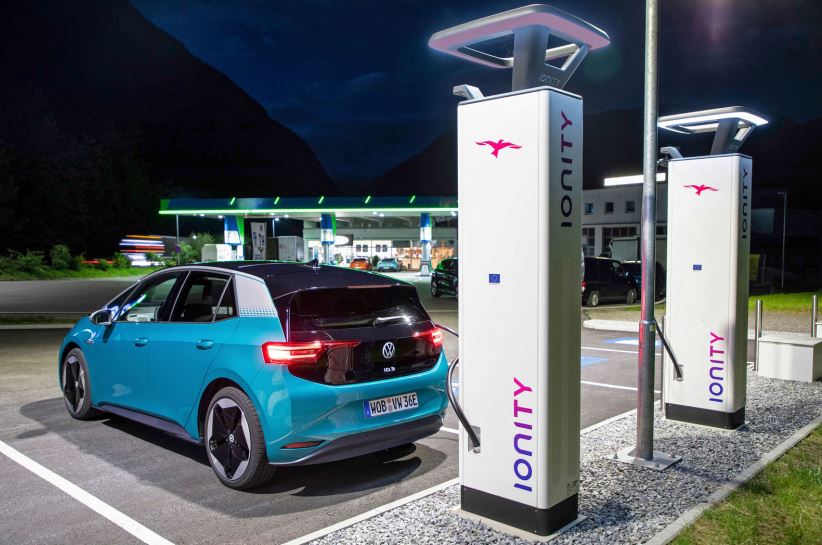
Sales of electric cars accelerated in the first half of 2023, but road blocks ranging from lower subsidies to inadequate infrastructure threaten their rise to dominance in Europe and the UK.
EV registrations increased 53.8% over a year earlier, data from the European Automobile Manufacturers’ Association (ACEA) showed, boosting EVs' market share in the EU to 15,1% versus 10,7% in June 2022. In Britain, their share of new registrations even jumped to 16.1%
Volkswagen [VOW3] saw its global EV sales double in the first half and targets EV sales at 8% – 10% of total units in 2023. Large OEM’s are fighting for market share across price segments with rapidly expanding model lineups, and even pioneer Tesla [TSLA] joined the fight with old-fashioned price cuts.
Those lower retail prices have hurt profit margins, as Tesla’s first-half results show, declining from 17% a year earlier to 10% in 2023. Tesla was "entering the real world of tight pricing and cost competitiveness," Stellantis [STLA] CEO Carlos Tavares quipped.
What Will Happen With The Chip Shortage?
In that real world, one big issue hampers the further speeding-up of electric: an enduring shortage of computer chips and other components. That originates from 2020, when chip production fell dramatically in anticipation of collapsing demand, which instead held up and even increased over pre-pandemic levels.
The shortage has since eased markedly going by half-year reports of large manufacturers: "pressure is shifting from semiconductor shortages to transportation and logistics delays", Volkswagen said in its release, while Stellantis shifted the focus on logistics disruptions as a cost driver.
Production levels at car manufacturers are now relatively low after three years of chips and parts shortages, which has a long-lasting negative effect, according to Morningstar’s automotive analyst Richard Hilgert.
"There is not enough capacity in the chip industry at the moment. Only from 2024 and a bit more in 2025, chip production capacity will ramp up as investments by the chip producers materialise," he says.
Large chipmakers such as TSMC and Intel are planning investments for new factories in the US and in Europe, but the industry remains dependent on Taiwan and exposed to political risks surrounding it.
The chip industry is crucial for facilitating the switch to electric driving, because electric cars contain much more chips than combustion-engine cars.
"EV’s are fully digitized. You need the latest high-technology chips for a number of applications, but also still the lower-end chips for functions like a window mechanism," he continues.
"So the chip industry needs to produce both high and low technology chips in high volumes. In 2024, we will see extra capacity and in 2025 the situation will ease further."
Fading Incentives
There's a smörgåsbord of government incentives to boost EV adoption across European countries and the UK, but they have one thing in common: they are getting more austere.
In Germany the subsidy for buying a new electric car has just been cut to €6,750 from €9,000, and faces another cut at year-end. In the Netherlands, the incentive will go down from €2,950 this year to €2,550 in 2024, and stop thereafter.
Disappearing fiscal incentives are the other part of this trend, says Jan Jaap Koops from Dutch automotive market data researcher RDC.
"In the Netherlands EVs and hybrids are now partially exempt from road tax," he says.
"In the coming years, that benefit will be gradually taken away, meaning owners will have to pay the full amount of road tax for a car that is much heavier than its competing ICE vehicle." Doing the maths, this could end up with the EV being the more expensive option, Koops points out. All in all, this can lead to a reduced appetite with car buyers.
Demand may be declining already, judging by the uptake of the Dutch government's EV incentives budget. Less than half of the dedicated government fund for financing incentives has been used this year, whereas last year it dried up by May.
Missing Targets
Some manufacturers are stumbling on the route to electrification. Ford postponed its target to produce 600,000 electric vehicles per year to 2024 from 2023. CEO Jim Farley also ditched a target of two million cars by 2026, without mentioning a new timeframe. Ford is "flexible on the timing", Farley said, adding "the transition to EV’s is going quite dynamically".
To hold on to its market share, Ford had to follow Tesla in retail pricing cuts, Farley added. Ford has been hit hard by the losses from its EV operations; $1.1 billion in the second quarter, slightly double the number a year earlier and worse than the $722 million in Q1. The outlook for full 2023 is a $4.5 billion loss, revised up from $3 billion and a sharp increase from the $2.1 billion lost on EVs in 2022.
When Capacity Short Circuits
Then there is the practical issue of shortcomings in the electricity grids, both in Europe and the US. In Europe, utilities are sounding the alarm about grid congestion making it impossible in some areas to add connections for homes, companies or car charging points. Heavy investments and an active role for governments in easing permitting procedures are needed to make enough electricity available to users.
"Politics is driving us towards the EV, not the automotive industry", Koops says, adding that rules around carbon emissions are defining manufacturers' behaviour to a large extent.
"The fines for CO2 emissions outside the limits are so high that they will sell EV’s where they can, with Norway and the Netherlands ahead, to make room if other markets lag behind."
The European and the US governments have set targets for fossil fuel emissions reduction that are only achievable if electric driving becomes the norm. The European Commission has set 2035 as the year when fossil fuel-driven vehicles can no longer be sold as new, while the US has adopted the Clean Air Act.
"The automotive companies will simply have to adapt to it", Hilgert says.
The switch from internal combustion to to electric driving continues in an environment full of uncertainties. Morningstar's Hilgert now expects a 30 to 40% global market share for EV’s by 2030. But as the data shows, the shift won't necessarily be automatic.































